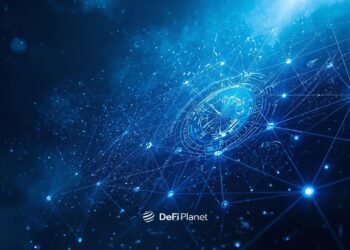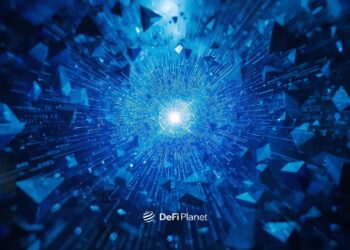Given recent events in the crypto industry, it may be difficult to entrust the safety of one’s assets to custodial solutions. Proof-of-Reserves provides a solution for those concerned about the transparency of their exchange-held assets: the ability to verify those reserves. This is critical in ensuring that tangible assets back cryptocurrency holdings on custodial platforms.
In the aftermath of recent events in the crypto space, several tokens have lost over 10% of their value. Binance CEO Changpeng Zhao announced that the exchange would conduct a Proof-of-Reserves (PoR) audit to guarantee complete transparency in asset management at a time when investor sentiment is negative, and the market is in decline.
This guide explores the concept of Proof-of-Reserves, how it works, and the role it plays in winning investors’ trust.
What is Proof-of-Reserves?
A Proof-of-Reserves audit is conducted by a neutral third party to ensure that a decentralized organization has the assets it claims to have. This is accomplished through the use of the Merkle tree. An auditor can use a Merkle tree to condense all of the client’s balances, representing the consolidated value of the assets of the decentralized entity.
Without a Proof-of-Reserves audit, DeFi organizations could use customer deposits however they pleased. Proof-of-Reserves ensures that lenders do not exceed their collateral when lending cryptocurrencies. This helps the firm repay lenders in the event of any unforeseen circumstances.
Proof-of-Reserves can also be referred to as a public report of a decentralized company’s financial activities. Customers can verify if their accounts were included in the Proof-of-Reserves process.
Anyone new to the cryptocurrency market should ensure that the exchange they choose has a dedicated Proof-of-Reserves audit and a separate cold wallet where users’ funds are stored.
How Does Proof-of-Reserves Audit Work?
Custodial institutions hold the cryptocurrency assets of their clients in a hot wallet and process withdrawal requests from there. The institution also creates a cold wallet to store customers’ funds offline. Users must first obtain a wallet address before they can make deposits.
Deposits are split between the “hot” and the “cold” wallets. Customers of custodial financial platforms do not have complete control over their assets because the platforms themselves store the private keys to the assets’ addresses.
Investors can learn more about an institution’s assets by tracing the transactions involving the institution’s hot and cold wallets.
However, this only shows the total assets in custody as a whole without indicating whose assets are included. Proof-of-Reserves involves auditing the institution’s reserves and demonstrating that its customers use those reserves. This process is carried out by using the Merkle tree.
What is a Merkle Tree?
The Merkle Tree data structure makes it easy to access and safe to store data. The goal of the Merkle tree is to organize related pieces of data so that each can be accessed independently without having to go through every branch of the data. The Merkle root is the central node of the tree, and the branches are made up of different types of information.
The Merkle root serves as the central hub that links all of the data nodes together and verifies that accurate information is being kept in each of the data subtrees. It’s like having a single checkpoint for the entire data tree. As a bonus, it offers a standardized method of data security, making it, so that information kept at the various outposts is safe from corruption.
Merkle trees have already emerged as the primary data management method and central component for blockchains to keep track of the ever-expanding data set generated by users of the network. Merkle trees provide a storage and identification system that stores data by hash rather than by chain because each block added to the chain is identified by a hash. Consequently, the network does not need to compute full blocks to verify data within the block using the block’s hash.
The Proof-of-Reserves function thus records an on-chain representation of a miniature Merkle tree detailing the exchange’s liabilities and assets. An auditor starts the process by considering a period record of an institution’s assets in custody. The auditor then uses a Merkle Tree to arrange each data in the record.

Benefits of Proof-of-Reserves
Trust and Transparency
Market capitalization and the number of tokens in circulation for digital assets have increased dramatically since Satoshi Nakamoto published the Bitcoin whitepaper. Regarding policy concerns, most people agree that a lack of transparency makes it difficult to invest more money and devise new ways to improve technology.
The transparency and auditability of digital assets are their main selling points. Despite the paradigm-shifting nature of public blockchains, databases held by centralized parties make transfers and balances more difficult. Proof-of-Reserves confirms that a centralized party controls the assets in its reserve.
Auditability
Blockchain technology is intended to provide a secure, auditable, and decentralized trust system.
Most digital asset platforms, however, do not link their transactions or user balances to public blockchains because they are centralized intermediaries.
Instead, these transactions are stored in the private databases of the centralized service providers (off-chain transactions).
Most digital currency exchanges combine user funds from multiple wallets for convenience. These mixed wallets are not auditable, meaning that the use of mixed wallets and off-chain transactions can jeopardize the concept of a publicly accessible, auditable ledger and data.
Fraud Prevention
If the Proof-of-Reserves is standardized and made available to the public, it may deter and clarify issues related to holding insufficient reserves or failure to disclose losses.
Moreover, hackers frequently target digital asset platforms and custodians, as they are similar to centralized platforms. Having a standard audit practice for the whole industry can help cut down on these reserve losses and increase the chances of recovering them.
Customer Protection
In the United States, there is a statewide transmitter licensing regime that imposes stringent compliance requirements meant to safeguard consumers. MSBs (money services businesses) are usually subject to some customer protection measures imposed by state regulators.
Why is Proof-of-Reserves Becoming Popular After the FTX Crash?
After the collapse of the FTX cryptocurrency exchange in November 2022 and subsequent remarks by Binance about the importance of transparency, Proof-of-Reserves is becoming more popular.
Proof-of-Reserves is a secure and transparent method of ensuring the safety of customer funds, and it will become increasingly important as regulators seek to establish industry standards to protect consumers.
There is a strong correlation between the volume of trades and the value of customer deposits at cryptocurrency exchanges, making them the most popular type of cryptocurrency business. In light of the failure of many cryptocurrency companies in 2022 due to liquidity issues, regulations requiring Proof-of-Reserves may soon be implemented.
Proof-of-Reserves should be implemented by any cryptocurrency company that acts as a custodian for customers, as it provides independent evidence that customer funds are secure.
Non-custodial crypto businesses are exempt from implementing Proof-of-Reserves because they do not keep their customers’ funds on hand. It should be noted, however, that displaying Proof-of-Reserves is pointless if the liabilities are not disclosed.
While the early adoption of Proof-of-Reserves is encouraging, a more prudent strategy would be to evaluate the full balance sheet, keeping a close eye on liabilities while maintaining transparency about capital reserves. Not just the company’s reserves matter; the company’s exposure is also critical. For instance, FTX divested assets and income to over 130 companies.
The FTX collapse has necessitated tighter regulation of the cryptocurrency market. Although key market players are doing everything possible to restore public trust, more than Proof-of-Reserves is needed.
In Conclusion
- The crypto industry is in disarray following a wave of thefts from custodial financial platforms. Regardless of the unfortunate events, the implementation of Proof-of-Reserves is a step in the right direction.
- The entire industry is putting pressure on centralized exchanges to be more transparent. Users may soon be able to independently verify claims and hold exchanges accountable.
- Although Proof-of-Reserves is a crucial factor in determining the legitimacy of a crypto platform, it is only one of several criteria. Crypto users must take precautionary measures by learning how to secure their cryptocurrencies.
If you would like to read more articles like this, visit DeFi Planet and follow us on Twitter, LinkedIn, Facebook, and Instagram.
“Take control of your crypto portfolio with MARKETS PRO, DeFi Planet’s suite of analytics tools.”





















